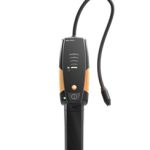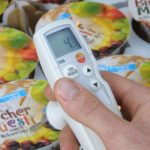In an era of constant technological change and increased pressures on emissions, nothing stays the same for long. Even the HVAC and refrigeration industry is subject to its own governing influences, with current trends moving away from hydrochlorofluorocarbons (HCFC) to hydro-flourocarbons (HFC) and natural products that reduce their ozone contribution.
Naturally, this trend will have an effect on the way refrigeration gauges behave, and technicians will need to be ready to measure different substances. While old-style analogue devices will require calibration every time you confront a new substance, digital gadgets come pre-programmed to tackle a number of different refrigerants.
This ensures that not only are you saving time, you’re reducing the chance of errors as well.
R22 refrigerant to be phased out
This changing trend is not solely due to commercial pressures, but regulatory influences also. In the case of R22, this is on an international scale.
In accordance with the Montreal Protocol on Substances that Deplete the Ozone Layer, countries from across the globe have agreed to limit the use on refrigerants and other substances that cause undue environmental harm.
To achieve this, R22 import quotas have been reduced, and by 2030 its is expected to be phased out completely.
Australian Institute of Refrigeration, Airconditioning and Heating CEO Phil Wilkinson said companies will need to react quickly to find replacements.
“The continued use of R22 presents a risk to owners or managers of building assets, with the reduced availability pushing up the price of the refrigerant, where available,” he explained.
“Indeed, availability of the refrigerant is expected to be highly constrained from 2016 onwards.”
What’s next?
In a June 19 interview with Climate Control News, Australian Refrigeration Association President Tim Edwards outlined his view of the industry’s future. Mr Edwards strongly believes the next few years will be defined by synthetic and natural refrigerants, mostly due to environmental concerns.
“We all know that HCFCs are history and that HFCs are not too far behind,” he said.
“The future is really down to natural refrigerants versus HFOs.”
According to Mr Edwards, these replacements are likely to offer increased efficiency over the HCFC counterparts, provided systems are running as intended.
How will Testo help?
Testo is poised to continue its presence as an industry-leading equipment provider, with its digital measuring devices already equipped to handle a range of refrigerants.
The brand new flagship of the range, the Testo 557, is ready to handle 60 different refrigerants straight out of the box. So wherever the industry takes us, we’re ready.









 Reduce cooking oil costs while ensuring quality
Reduce cooking oil costs while ensuring quality Expert knowledge on CO2 monitoring
Expert knowledge on CO2 monitoring Refrigeration knowledge - in 3 modules
Refrigeration knowledge - in 3 modules



